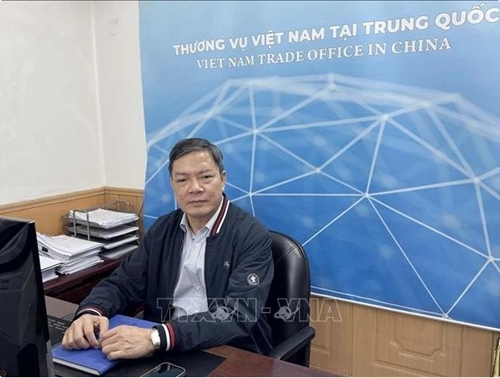    |
 |
|
Vietnamese Trade Counsellor in China Nong Duc Lai |
Lai said that amid declining trade between China and many of its partners, particularly large ones, Vietnam is one of the few countries maintaining stable trade relations with China, with double-digit growth. Vietnam is China’s fourth-largest trading partner globally and the biggest within ASEAN.
Bilateral trade has sustained high growth, he said, citing Chinese customs data as showing that total trade between the two countries reached 235.4 billion USD in the first 11 months of 2024, marking a 14% increase compared to the same period of 2023. The figure exceeded 250 billion USD by the end of 2024. Notably, Vietnam's agricultural exports to China continued to show impressive growth, he added.
Progress has also been seen in boosting market access for agricultural products. Both countries have signed protocols allowing fresh coconuts, frozen durian, and farmed crocodiles from Vietnam to be officially exported to China, which is expected to further bolster agricultural exports in the years ahead, Lai held.
The official highlighted efforts to facilitate trade cooperation, especially in ensuring smooth customs clearance, and diversify trade promotion activities to introduce Vietnamese farm produce to the Chinese market. Cooperation among localities as well as ministries and sectors of the two sides have also helped promote trade between the two countries.
Regarding the trade outlook for 2025, the counsellor said that with the current development of bilateral ties, the recent high-level visits have provided new momentum for strengthening cooperation. These visits have paved the way for deeper collaboration across all sectors, with economic and trade partnerships remaining an important pillar.
During the recent mutual visits by the countries' Party and State leaders, numerous agreements were signed, mainly focusing on economic and trade cooperation, which has provided a stepping stone for collaboration in 2025 and beyond.
Vietnam plans to further leverage its geographical proximity to China, utilize preferential treatment under joint cooperation frameworks such as the ASEAN - China Free Trade Area (CAFTA) and the Regional Comprehensive Economic Partnership (RCEP), while optimizing both bilateral and multilateral cooperation mechanisms to tap into the 1.4-billion-strong market of China, Lai emphasized.
Source: VNA